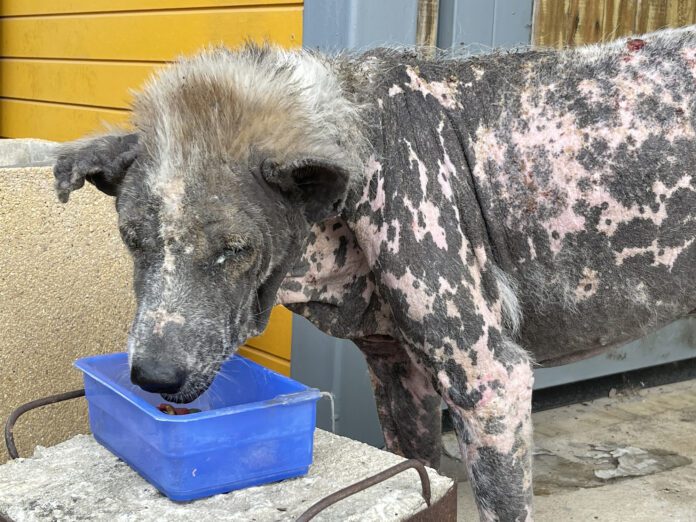Most skin infections in dogs are caused by Staphylococcus (Staph) bacteria. The most common culprit in dogs is Staph pseudointermedius. This infection is different from MRSA (Methicillin-resistant Staphylococcus aureus), the super bug that can be deadly to people. And, although MRSA is highly contagious and can transfer from dog to person, Staph pseudointermedius in a dog rarely transfers to a person. Dog staph infection treatment depends on the severity of the infection.
Staph infections in dogs can be superficial or deep. With superficial infections, you may notice redness, hair loss, dry flakes, and pimple-like lesions that may or may not bother your dog. The infection may be localized to one area, like the groin, or widespread. Deep infections have similar lesions, but they include pain, swelling, disruption of the skin surface, and oozing. The classic, nasty “hot spot” on the neck or cheek is a perfect example of a deep bacterial infection.
The initial treatment for a minor dog staph infection may be done at home. It involves frequent bathing with an antimicrobial shampoo. Products with 4% chlorhexidine, like TrizChlor4, are effective and available without a prescription. Your veterinarian may recommend daily bathing with this medicated shampoo, although the minimum protocol is twice a week.
In addition to the antimicrobial action of the chlorhexidine, bathing helps remove the scabs, crusts, scales, and grease that harbor bacteria. If bathing is not possible, 4% chlorhexidine is available in wipes, sprays, and foams. If the infection fails to resolve, you must see your veterinarian.
Because of the ever-increasing occurrence of drug resistance in bacteria, many veterinarians will initially treat superficial infections topically before reaching for oral antibiotics. This topical-first method of treatment is called “antibiotic stewardship,” and it is important for the health of everyone.
Your veterinarian may recommend mupirocin, a generic antibiotic ointment available by prescription only, as it is highly effective against Staph infections in dogs. If topical therapy does not resolve your dog’s superficial Staph infection, oral antibiotics will be prescribed. Two to three weeks of treatment is usually sufficient.
Deep infections may require treatment with oral antibiotics for up to 12 weeks. Choosing the right antibiotic and keeping the dog on it long enough to kill the bacteria is important to avoid recurrent infections. Recurrent infections create resistant bacteria like MRSA. Your veterinarian will require follow-up visits to ensure full resolution of the infection before discontinuing antibiotics. These follow-up visits are extremely important. Some recurrent infections require culture and sensitivity testing to find the right antibiotic.
Most Staph infections are caused by another problem, so if your dog keeps getting skin infections, your veterinarian will try to identify and treat any underlying causes. The most common predisposing factors for Staph are:
- Allergies (food, seasonal, flea)
- Endocrine disease (Cushing’s syndrome, hypothyroidism)
- Mange mites (Demodex and Sarcoptes)
- Skin folds (facial, lip, tail, perivulvar)
- Immunosuppression
- Poor grooming
Finally, if your dog has a Staph infection, remember that resistant infections are an ever-increasing threat to everyone. Washing hands and bedding frequently helps keep everyone safe.






